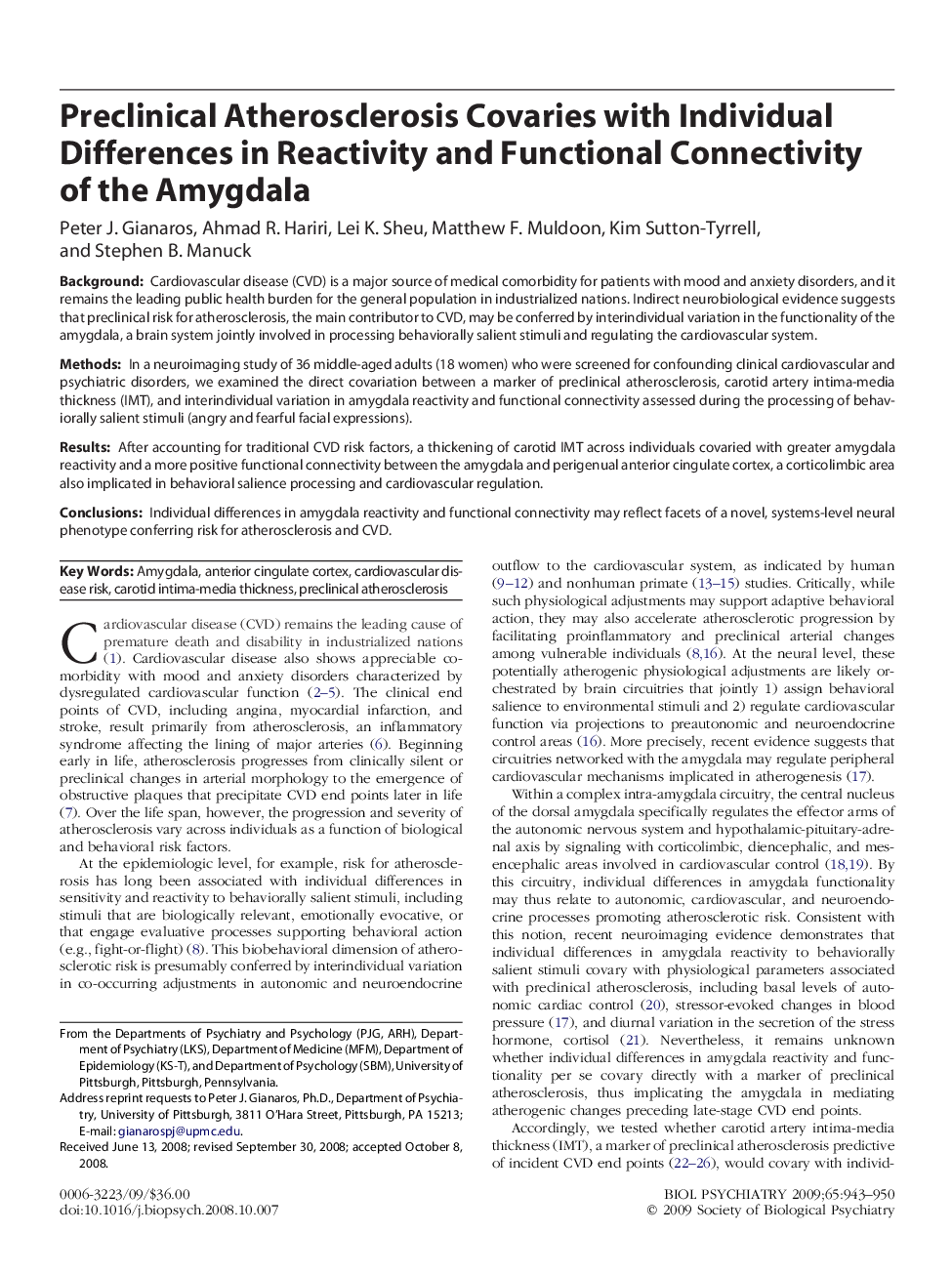| کد مقاله | کد نشریه | سال انتشار | مقاله انگلیسی | نسخه تمام متن |
|---|---|---|---|---|
| 4178966 | 1276525 | 2009 | 8 صفحه PDF | دانلود رایگان |

BackgroundCardiovascular disease (CVD) is a major source of medical comorbidity for patients with mood and anxiety disorders, and it remains the leading public health burden for the general population in industrialized nations. Indirect neurobiological evidence suggests that preclinical risk for atherosclerosis, the main contributor to CVD, may be conferred by interindividual variation in the functionality of the amygdala, a brain system jointly involved in processing behaviorally salient stimuli and regulating the cardiovascular system.MethodsIn a neuroimaging study of 36 middle-aged adults (18 women) who were screened for confounding clinical cardiovascular and psychiatric disorders, we examined the direct covariation between a marker of preclinical atherosclerosis, carotid artery intima-media thickness (IMT), and interindividual variation in amygdala reactivity and functional connectivity assessed during the processing of behaviorally salient stimuli (angry and fearful facial expressions).ResultsAfter accounting for traditional CVD risk factors, a thickening of carotid IMT across individuals covaried with greater amygdala reactivity and a more positive functional connectivity between the amygdala and perigenual anterior cingulate cortex, a corticolimbic area also implicated in behavioral salience processing and cardiovascular regulation.ConclusionsIndividual differences in amygdala reactivity and functional connectivity may reflect facets of a novel, systems-level neural phenotype conferring risk for atherosclerosis and CVD.
Journal: Biological Psychiatry - Volume 65, Issue 11, 1 June 2009, Pages 943–950